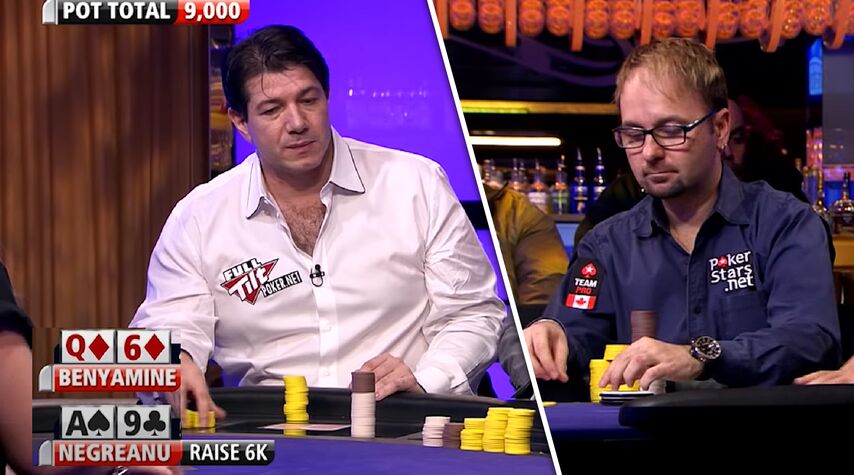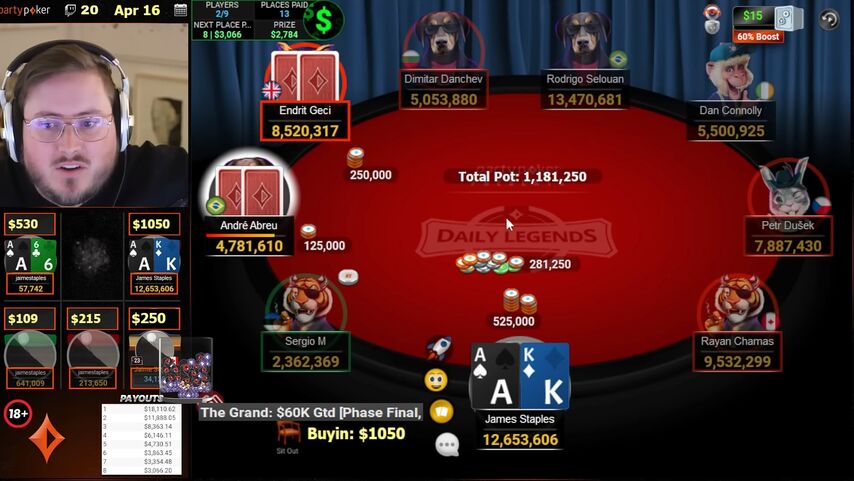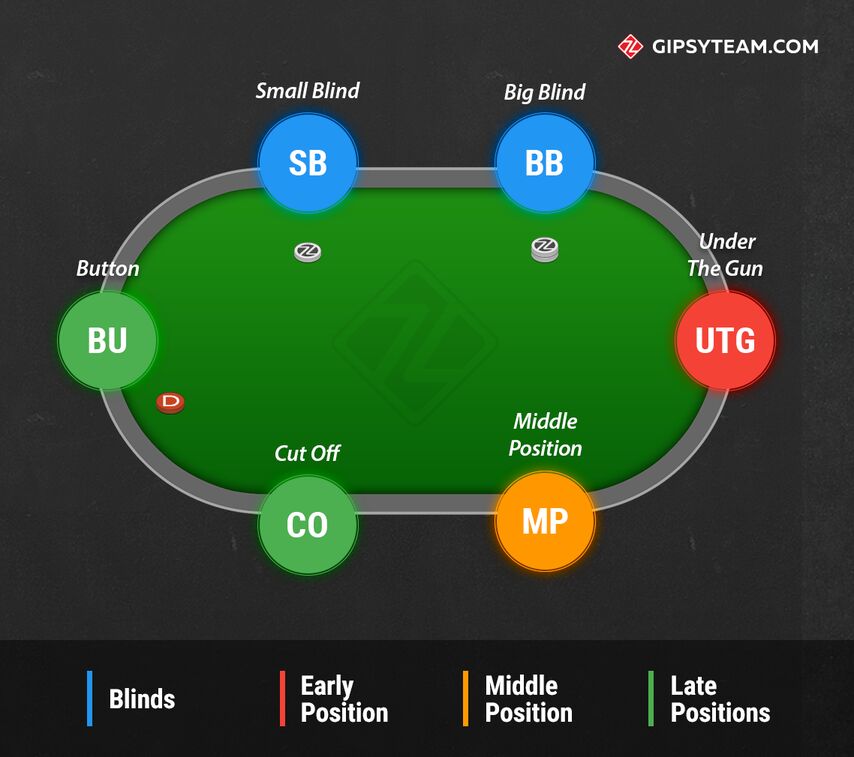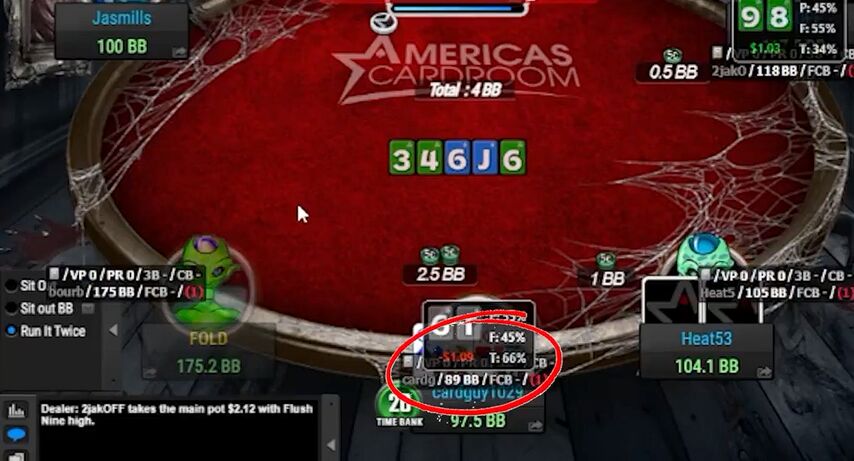Isolation in the real world means being alone, but what is the isolation in poker?
In poker, “isolating” an opponent means creating a one-on-one situation, usually with a raise.
Let’s say a few players have limped into the pot (called the big blind amount preflop). Instead of playing against all of them, you can make a raise and play against just one. A weaker player with a loose style might be tempted to continue.

Your hand strength increases when you isolate and play against fewer players, plus, your overall equity increases. (equity = way to show your chance of winning the hand)
For example, in a matchup between A♥ A♣ and K♠ K♦, the aces win around 4 out of 5 times. Let’s add another player with Q♠ Q♦ into our hand. Now pocket aces win just over 3 out of 5 times. You get the idea.
The more players in the hand, the more diluted your equity becomes.
Why Should Poker Players Make Isolation Plays?
Isolation plays are designed to put you heads up against players you have an advantage over. That means loose players who call too often and will continue with weak hands.
But wait, isn’t it better to play against more opponents and get more chips from everyone?
In general, the more players you see a flop with, the lower your equity is. Even if you hold pocket Aces, more players means less equity for your hand. That’s why, isolating raises are so important in poker.
So instead of seeing a flop with 5 other players, experienced pokers will take a more aggressive stance. By thinning the field, they play against fewer opponents and also add a few big blinds to the pot from the players who fold.

Jamie Staples of the partypoker team isolates the small and big blind players in this Daily Legends tournament.
The Daily Legends have a range of buy-ins from low to high stakes and are easily the largest events on the partypoker platform. Jamie ended up taking 3rd place in the 60K Daily Legends event, collecting a sweet prize of over $8,000.
How to Make Isolation Raises in Poker
Remember your goal. The isolation raise should get you heads-up with one of the looser players at your table. Think about these steps and create a strategy before clicking the raise button.
1. Decide Which Player You Will Isolate
It’s time to find your targets at the table. Look for “limpers”, meaning they passively enter pots by calling the big blind amount preflop. You can also target players who have loose-aggressive and loose-passive styles, as they will be inclined to call your raise.
It’s common to isolate the players in the small and big blind positions. If you are in a later position, you can incentivize the players in the blind to call your isolation raise. They’ll have a positional disadvantage if they continue in the hand, but your sizing might be too attractive for them to fold to.
Important note: Try to anticipate limpers who are planning to trap you and re-raise. This move is more common among inexperienced players. Watch out for anything uncharacteristic, such as a player limping who usually doesn’t.
In general, you should always have a plan when you make an isolation raise. What will you do if someone 3-bets you?
2. Think About Your Position
We can play a wider range of hands when in a late position. Sure, you can make isolation raises from out of position, but you will have a more difficult time making a profit postflop. Try to make the majority of your isolating plays from in position, as close to the button as possible.

Making isolation raises from an early position is going to be difficult. Lots of players that are acting after you have the attractive option to call your raise and play against you from a better position.
3. Choose Your Isolation Range
You can make isolation raises with a wider range of hands from a later position. When we say a wider range, we are meaning all of the hands you would usually raise with (AK, AQ, AJ, A10, and all premium pocket pairs) plus a few more middle-strength hands.
This all depends on your table and the players around you. You can isolate with some suited connectors and rely on your skill advantage over weaker players. It all depends.
It’s important to understand that hole cards do not always reflect your range. You might be able to run profitable bluffs against the players you isolate.
Find out more about the players around you by using a HUD, just like almost every successful online poker player. This kind of real-time information could be the difference between making an isolation play based on solid reasoning – and making one based on an assumption.
4. Choose Your Raise Sizing
If your isolation raise is too small, you won’t be isolating. Instead, you’ll invite a few players to play in a larger pot. Your isolation raise needs to make the other limpers fold, while targeting the specific player you want to face.
Let’s say you are playing some $0.50/$.1 online poker. If you have limpers in front of you and you want to isolate one of the looser players, you might choose a sizing like 2.5x-3x the big blind (or more). If you suspect that you will get more than one caller with a 3x raise, increase the size slightly.
Time to Start Trying Some Isolation Plays
ACR is one of the best places online to start testing these isolation raises. If you play at lower stakes (between $0.01/$0.02 and $0.10/$0.25), you’re going to be sitting with lots of casual opponents.
Start using a HUD, if you haven’t got one already. This tool will display vital information about the players you want to isolate. Knowing how many hands a player is investing in (VPIP) is one of the things you must know about your opponents. It will help you decide when to make profitable isolation plays.

Play Texas Hold ‘em and Omaha cash games or tournaments at ACR and enjoy one of the largest welcome bonuses in the online poker world. They’ll match your deposit up to a whopping $2000. Deposit a minimum of $25 and you’ll get it matched dollar for dollar. As you play, you’ll unlock the bonus in increments.
















